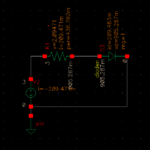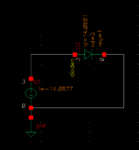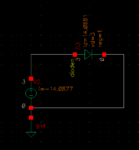coolsummer
Junior Member level 3
Hi,I‘m a beginner in IC......As we know, the i–v relationship of diode In the forward region is closely approximated by exponential function, but my simulation result is a linear fuunction....The X-axis is the current and the Y-axis is the supply voltage.....The simulator is spectre,the resistor and diode are from tsmc180 pdk......Can anybody tell me what's wrong with my simulation...




